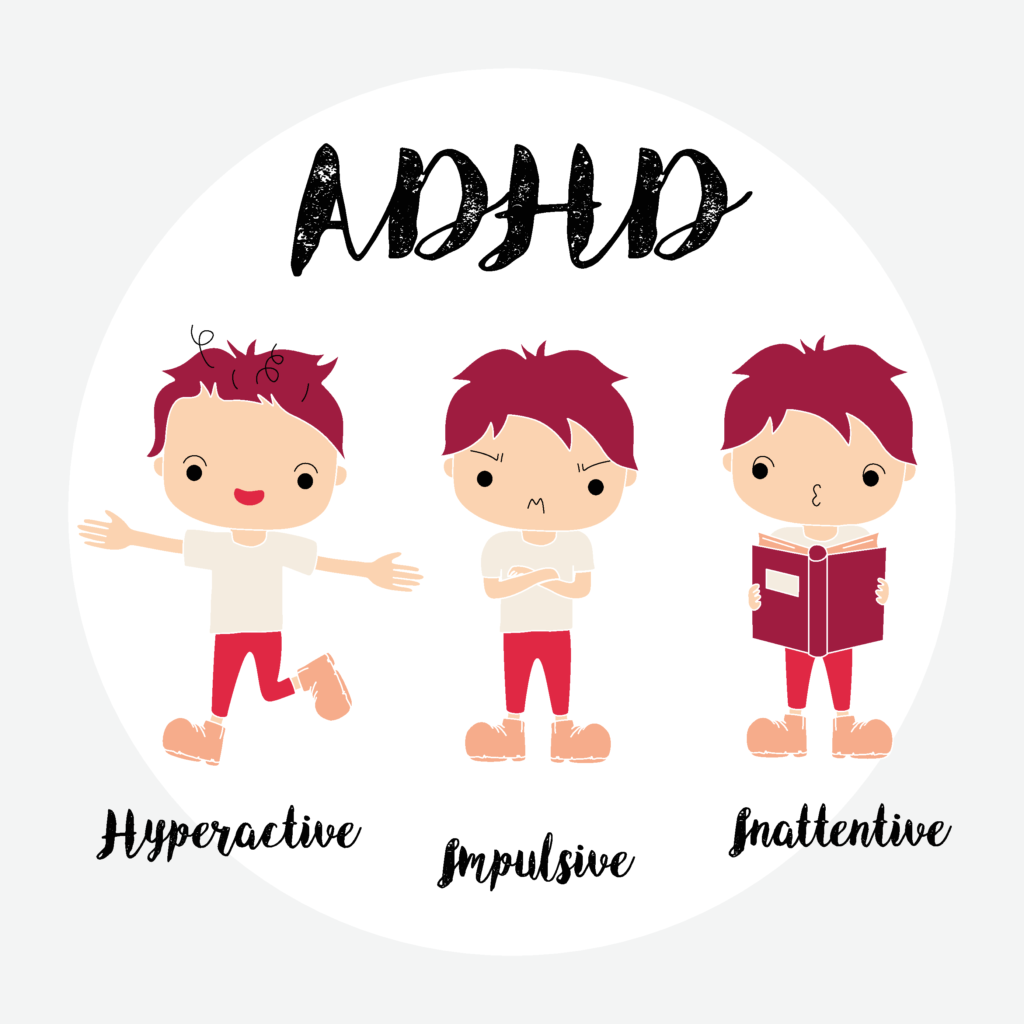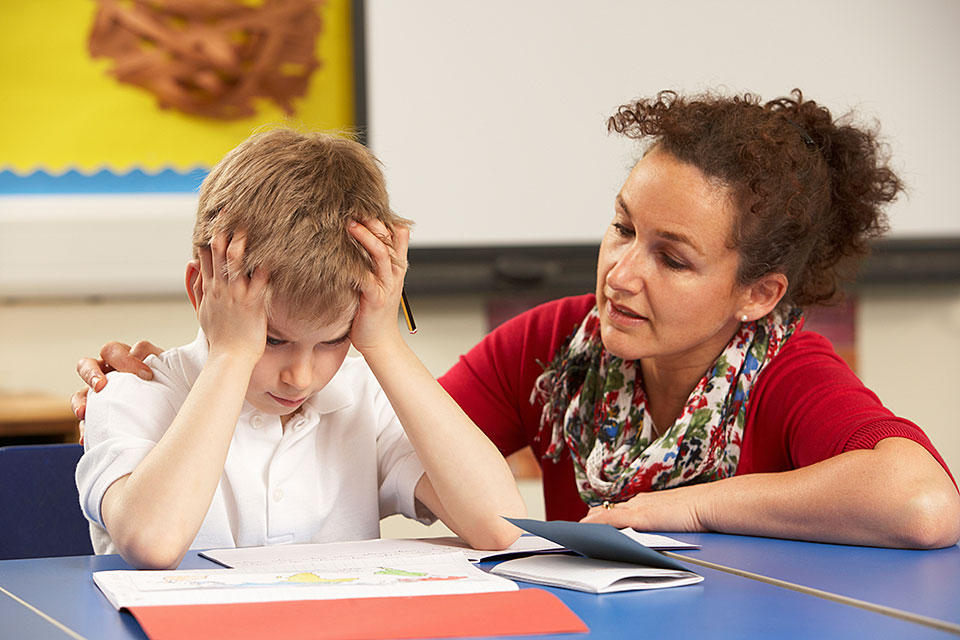When it comes to Attention Deficit Hyperactivity Disorder (ADHD), recognizing the signs early can be essential in helping children receive proper support. ADHD manifests differently in every child, but certain symptoms are common across cases. Understanding these symptoms within the context of the stages of child development can provide valuable insights for parents and educators. This article breaks down the 10 key signs and symptoms of ADHD in children, covering the types, testing options, and treatment approaches.
What is ADHD?
ADHD, or Attention Deficit Hyperactivity Disorder, is a neurodevelopmental disorder that affects a child’s ability to focus, control impulses, and regulate behavior. It is often diagnosed in childhood but can persist into adulthood. Symptoms typically appear before age 12 and can impact various aspects of daily life, including school performance and social interactions.

Current Understanding of ADHD:
ADHD is seen as a neurodevelopmental disorder with both genetic and environmental factors. Current research emphasizes that ADHD involves brain connectivity issues that affect self-regulation, making daily tasks challenging
1. Common Signs and Symptoms of ADHD in Children:
The symptoms of ADHD can emerge at various stages of child development, typically becoming more noticeable during early childhood when children begin structured learning environments. Signs and Symptoms of ADHD in Children can be divided into three main categories: inattention, hyperactivity, and impulsivity. Here are some typical indicators:
- Inattention: Difficulty focusing, forgetfulness, and frequently losing items.
- Hyperactivity: Excessive fidgeting, talking, and inability to sit still.
- Impulsivity: Interrupting others, impatience, and risk-taking behaviors.
- Disorganization: Challenges in managing tasks and time.
- Forgetfulness: Frequently forgetting daily activities or responsibilities.
- Difficulty listening: Struggling to pay attention when spoken to directly.
- Avoiding tasks: Reluctance to engage in tasks that require sustained mental effort.
- Frequent interruptions: Interrupting others or intruding on conversations
- Emotional volatility: Rapid mood swings or difficulty managing emotions.
- Difficulty with social interactions: Struggling to connect with peers or understand social cues.
2. Types of ADHD: Signs and Symptoms of ADHD in children
There are three primary types of ADHD:
- Predominantly Inattentive ADHD: Known for inattentive symptoms without much hyperactivity. Children may appear dreamy, easily distracted, or forgetful.
- Predominantly Hyperactive-Impulsive ADHD: Characterized by excessive energy, restlessness, and difficulty with impulse control.
- Combined Type ADHD: The most common form, involving both inattentive and hyperactive symptoms.

3. ADHD Test: Getting an Accurate Diagnosis
An accurate ADHD diagnosis often involves a comprehensive ADHD test, which is administered by a pediatrician, psychologist, or ADHD specialist. These evaluations consider the signs and symptoms of ADHD in children, including feedback from teachers and parents to understand behavioral patterns. Cognitive tests are also sometimes used to assess attention and impulsivity levels, providing a clearer picture of ADHD’s impact on the child’s daily life.
In some cases, practitioners may also explore the possibility of underlying conditions, such as food allergies, that could contribute to behavioral issues. Food allergy testing can help identify specific allergens that might exacerbate symptoms associated with ADHD
4. Inattentive ADHD: A Closer Look
Children with inattentive ADHD often go unnoticed because they may not be disruptive in class or at home. They might appear quiet and well-behaved but still struggle with focus and organization. Among the signs and symptoms of ADHD in children with an inattentive type are losing track of belongings, overlooking details, and finding it hard to stay on task. These symptoms can make it challenging for them to keep up academically or socially, even though their behavior might seem compliant or withdrawn.
5. The ADHD Brain: Is It Wired Differently?
Research suggests that the ADHD brain may function differently, particularly in areas related to dopamine regulation, a neurotransmitter crucial for maintaining focus, motivation, and emotional control. This difference can result in challenges for children with ADHD, affecting their learning and behavior. The concept of the powerful brain highlights the potential for neuroplasticity and adaptation in children diagnosed with ADHD.
6. Object Permanence and ADHD: What It Means
Object permanence ADHD issues can affect a child’s memory and ability to keep track of items or tasks. For example, they may frequently misplace belongings or forget about tasks unless they have regular reminders.
7. ADHD Therapist: Seeking Professional Help
Working with an ADHD therapist can be highly beneficial. Therapy often includes behavioral interventions, coaching, and family counseling to help children manage ADHD symptoms effectively.
8. ADHD Medication: Understanding Treatment Options
ADHD medications are often prescribed to help improve focus and impulse control. Stimulants, like methylphenidate and amphetamines, are commonly used, but non-stimulant medications are available for children who don’t respond well to stimulants. Consult with a healthcare provider to determine the best treatment plan.
9. ADHD Symbols and Schools for Support:
The ADHD symbol often represents awareness and support for individuals affected by the disorder. Schools like Parkland School’s ADHD Charter School provide tailored resources and structured learning environments, which are beneficial for students managing signs and symptoms of ADHD in children. These accommodations help children with ADHD thrive academically and socially by addressing their unique needs and focusing on supportive strategies that promote attention, organization, and behavioral management.
10. What is the latest research on ADHD?
The latest ADHD research has unveiled several insights into both the brain mechanisms behind the disorder and potential treatment pathways.

- One recent study from the National Institutes of Health (NIH) linked signs and symptoms of ADHD in children to atypical connections between the brain’s frontal cortex and its deeper information-processing centers.
- By analyzing over 10,000 brain scans, researchers identified differences in these connections, which could impact attention regulation and impulse control, offering new avenues for targeted therapies
- Additionally, research has explored the benefits of both stimulant and non-stimulant medications.
- A study published in Neuroscience and Biobehavioral Reviews highlighted that medications like methylphenidate and atomoxetine improved cognitive functions such as working memory and reaction time.
- However, it also underscored the importance of appropriate dosing, as high doses of stimulants are linked to an increased risk of adverse effects like psychosis.
- New findings in treatment outcomes reveal that effective ADHD management can extend beyond cognitive benefits, with recent studies associating medication adherence with a reduced risk of mortality in ADHD-diagnosed individuals.
- This suggests that comprehensive ADHD care, including medication and behavioral therapy, could improve both mental health and overall life expectancy.
Supporting Your Child with ADHD:
By understanding the signs and symptoms of ADHD in children, parents can better identify when to seek support and determine which types of interventions may be most helpful. Recognizing these signs—such as difficulty concentrating, impulsivity, and challenges in organizing tasks—can facilitate early intervention and effective treatment plans.
Conclusion:
Recognizing the signs and symptoms of ADHD in children is crucial for early support. Children with ADHD may show a variety of behaviors, from inattentiveness to hyperactivity, and understanding these ADHD symptoms can help parents make informed choices. A proper ADHD test conducted by a specialist can confirm the diagnosis, allowing families to explore different ADHD types, such as inattentive or combined types, and determine suitable treatments, including therapy or ADHD medication.
FAQS:
What is the Dark Side of ADHD?
ADHD can lead to difficulties in school, work, and relationships, and is associated with higher risks of anxiety, depression, and substance abuse. When untreated, these challenges may compound over time, affecting quality of life and self-esteem.
When Do Children Start Showing Signs of ADHD?
Symptoms of ADHD usually appear between the ages of 3 to 6, though signs and symptoms of ADHD in children can lead to a diagnosis as early as preschool if these behaviors significantly impair functioning. Early recognition is crucial, as inattention, hyperactivity, and impulsivity can affect a child’s ability to thrive in social and educational settings.
Can ADHD Kids Live Normally?
With proper treatment and support, many children with ADHD can manage their symptoms and lead fulfilling lives. Early intervention and a supportive environment greatly enhance outcomes
Does My 5-Year-Old Have ADHD?
If your child shows persistent inattention, hyperactivity, or impulsiveness that interferes with daily life, it may be worth consulting a professional. However, diagnosis in young children considers developmentally appropriate behavior
How to Treat Kids with ADHD?
Treatment typically includes behavioral therapy, parent training, and, in some cases, medication. A tailored plan focusing on routine and positive reinforcement can greatly help children manage symptoms.
Is ADHD a Disability?
Yes, ADHD is considered a disability under U.S. law and can qualify individuals for accommodations in schools and workplaces due to its impact on major life activities.
How to Get Diagnosed with ADHD?
Diagnosis of ADHD involves a comprehensive evaluation by a mental health professional, who considers a child’s signs and symptoms of ADHD in children alongside their medical history, behavior reports, and standardized tests. This multifaceted approach ensures a thorough understanding of the child’s behavior in various settings, including home and school.
Is Autism and ADHD Comorbid?
Yes, ADHD and autism often co-occur, with research showing that up to 50% of children with autism may also have ADHD.
Is ADHD Neurodivergent?
Yes, ADHD is part of the neurodiversity spectrum, which includes variations in how individuals think and process information.
How to Manage ADHD Without Medication?
Strategies include behavioral therapy, mindfulness, regular exercise, and organizational tools. Lifestyle changes and therapy can be effective for some without medication.
Is ADHD a Developmental Disability?
Yes, ADHD is a developmental disorder that affects the brain’s growth and development, impacting crucial areas like attention, self-control, and planning. These deficits manifest as signs and symptoms of ADHD in children, which can include impulsivity, hyperactivity, and difficulty maintaining focus on tasks. Early identification of these symptoms is vital for effective intervention and support.
How to Get ADHD Meds?
ADHD medications are prescribed by licensed medical professionals, typically after a formal diagnosis.
Can a Therapist Diagnose ADHD?
Yes, licensed therapists can assess ADHD, but diagnoses often involve psychologists or psychiatrists for formal evaluation.
Can a Psychologist Diagnose ADHD?
Yes, psychologists are trained to diagnose ADHD through assessments and behavioral observations.
Is ADHD Online Legit?
ADHD Online offers telehealth assessments, and while it’s a convenient option, it’s best to verify their licensure and read reviews to ensure they meet your needs.
External Resources:

Empowering parents to raise happy, confident kids. Get practical parenting tips and advice on our blog, Smart Parent Guides.
